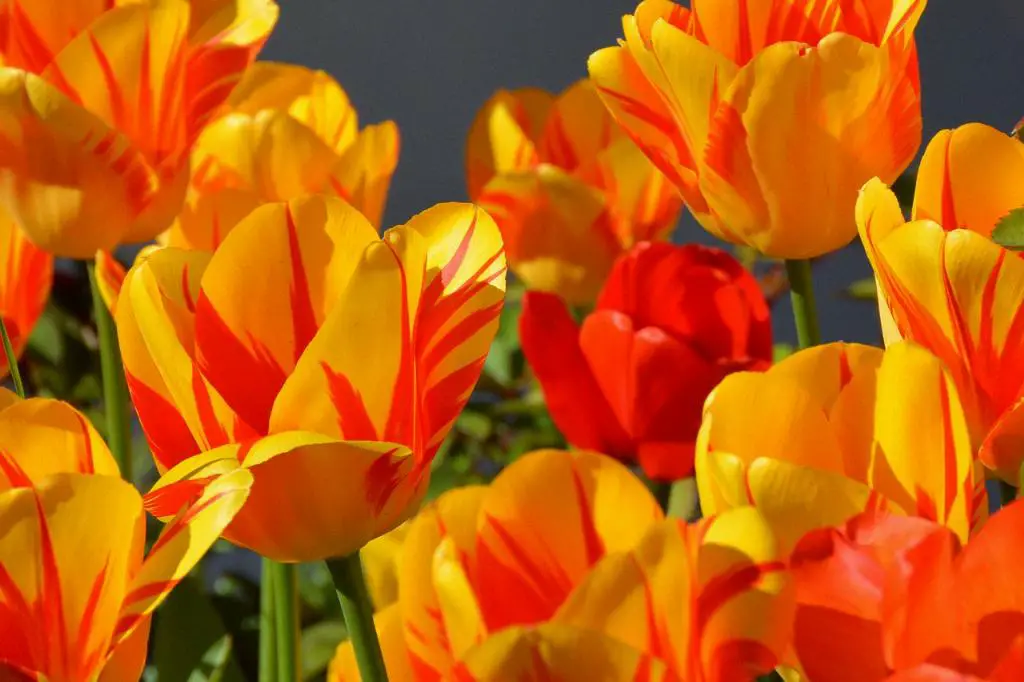When it comes to planting tulip bulbs, one of the most common questions that arises is: which way should you plant them? Getting the orientation right is crucial for the proper growth and development of your tulips. While it may seem like a simple task, ensuring that you plant your tulip bulbs correctly can make a significant difference in the success of your garden.
Tulip bulbs, like many other types of bulbs, have a specific orientation for planting. In the case of tulips, the pointed tip of the bulb should be facing upwards when planted. This ensures that the growing stem will emerge from the correct end and grow upward toward the sunlight.
Planting tulip bulbs upside down can lead to a variety of issues. If the growing tip is facing downwards, the tulip plant may struggle to emerge from the soil, resulting in stunted growth or even failure to bloom. Ensuring that the bulbs are planted with the right orientation is key to encouraging healthy growth and vibrant flowers.
It’s essential to take the time to properly prepare the planting site before inserting the tulip bulbs. Loosen the soil to a depth of at least 8-10 inches to provide room for the bulbs to establish their root systems. Adding some organic matter, such as compost or peat moss, can help improve soil drainage and fertility, creating an optimal growing environment for your tulips.
When planting tulip bulbs, it’s recommended to space them about 4-6 inches apart to allow for adequate air circulation and room for growth. Dig a hole that is approximately 3 times deeper than the height of the bulb, ensuring that there is enough space for the roots to develop downwards while the stem emerges upwards towards the surface.
After placing the bulbs in the hole with the pointed end facing upwards, gently cover them with soil, pressing down lightly to remove any air pockets. Water the newly planted bulbs thoroughly to help settle the soil and initiate the growth process. Ensuring that the bulbs receive adequate moisture during the planting process is crucial for successful establishment.
Once planted, it’s important to monitor the soil moisture levels regularly to ensure that the bulbs are receiving the appropriate amount of water. Tulips prefer well-draining soil, so it’s essential to avoid overwatering, which can lead to rotting of the bulbs. However, be mindful not to let the soil dry out completely, as this can hinder the growth of the bulbs.
Adding a layer of mulch over the planted area can help regulate soil temperature and moisture levels, providing additional insulation for the bulbs. Mulching also helps suppress weed growth, reducing competition for nutrients and sunlight that can hinder the growth of your tulips.
As the tulip bulbs begin to sprout and grow, it’s important to provide them with adequate sunlight to fuel their growth process. Tulips thrive in full sun to partial shade, so be sure to plant them in an area that receives at least 6-8 hours of sunlight per day. Proper sunlight exposure is essential for the bulbs to develop strong stems and vibrant blooms.
Throughout the growing season, it’s crucial to monitor the health and growth of your tulips regularly. Keep an eye out for any signs of pests or diseases that may affect the plants, and take prompt action to address any issues that arise. By staying vigilant and proactive, you can help ensure that your tulips thrive and flourish.
In conclusion, when planting tulip bulbs, be sure to orient them with the pointed end facing upwards to promote healthy growth and blooming. Taking the time to prepare the planting site properly, provide adequate moisture, sunlight, and monitoring the plants’ progress can help you cultivate a stunning display of tulips in your garden.

